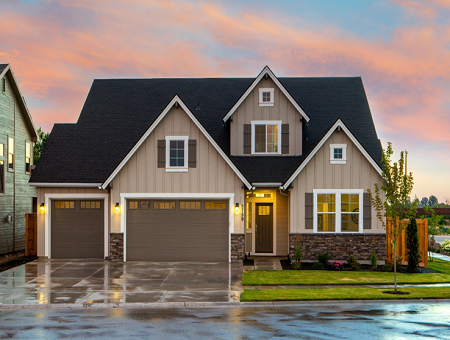 Owning a home is a great investment, but it comes with responsibilities. No matter how new or well-built your house is, regular maintenance is essential to keep it in top shape. Over time, even small issues can turn into major problems if left unchecked, leading to costly repairs and unnecessary stress. By taking a proactive approach and following a seasonal maintenance routine, you can ensure that your home remains safe, comfortable, and efficient year-round.
Owning a home is a great investment, but it comes with responsibilities. No matter how new or well-built your house is, regular maintenance is essential to keep it in top shape. Over time, even small issues can turn into major problems if left unchecked, leading to costly repairs and unnecessary stress. By taking a proactive approach and following a seasonal maintenance routine, you can ensure that your home remains safe, comfortable, and efficient year-round.
The key to effective home maintenance is consistency. Tackling a few essential tasks each season prevents overwhelming to-do lists and helps you stay ahead of wear and tear. Whether it’s preparing for harsh weather or simply keeping things running smoothly, breaking down these jobs into manageable chunks makes it easier to care for your home. One of the most important areas to focus on, especially before extreme weather seasons, is your roof. Let’s dive into how maintaining your roof can save you from bigger headaches down the road.
Spring and Fall Roof Checks
Your roof plays a vital role in protecting your home from the elements, but over time, exposure to rain, snow, wind, and sun can wear it down. That’s why inspecting your roof at least twice a year, typically in spring and fall, is a critical part of any home maintenance routine. These seasonal checks allow you to spot potential problems, like missing shingles or water damage, before they become costly repairs.
Begin with a simple visual inspection from the ground. Look for signs of sagging, cracked, or curling shingles and any debris buildup in gutters or downspouts. If you notice significant wear or suspect that your roof may be nearing the end of its lifespan, hiring professionals for roof installation services is the smartest choice. These experts ensure that any new installation uses durable materials and follows proper techniques, providing lasting protection for your home. Addressing roof issues promptly with professional installation can help safeguard your home for years to come.
With the roof in good condition, you can confidently move on to other important areas of your home’s exterior.
Exterior Maintenance: Siding, Windows, and Gutters
Maintaining the exterior of your home is just as important as caring for the interior. Start by inspecting your siding for any cracks, holes, or warping that could let in moisture or pests. Addressing these small issues early can prevent larger repairs later on.
Windows also need attention. Check seals and caulking around window frames to ensure there are no drafts or leaks. Resealing or replacing old caulking is a simple task that can improve energy efficiency and comfort.
Your gutters and downspouts deserve a seasonal check, too. Clean out leaves and debris to ensure proper water flow. Clogged gutters can lead to water damage around your foundation or even inside your home. Make sure downspouts direct water at least a few feet away from the house to prevent pooling near the base.
HVAC System Checks
Your heating and cooling systems work hard to keep your home comfortable in every season. To make sure they stay in good working order, schedule HVAC servicing in the spring and fall, right before the temperature extremes of summer and winter.
A professional technician can inspect your system, clean components, and ensure everything is functioning efficiently. That helps avoid unexpected breakdowns when you need heating or cooling the most.
In between professional visits, you can replace air filters every one to three months. Clean filters help maintain good air quality and allow your HVAC system to run more efficiently. Also, take a moment to test your thermostat settings at the start of each season to make sure they align with your comfort preferences.
Seasonal Yard and Landscaping Care
Taking care of your yard and landscaping not only enhances your home’s curb appeal but also prevents potential damage. In the spring and summer, focus on lawn care, trimming overgrown trees or shrubs, and checking for signs of pests or disease. Keeping trees trimmed away from your roof and siding can prevent damage from falling branches during storms.
As fall approaches, rake up leaves to avoid smothering your grass and prune trees to prepare them for winter. If you have an irrigation system, remember to winterize it before freezing temperatures arrive to prevent burst pipes or damage.
In the winter months, if you live in an area with snow, be mindful of snow buildup around your home’s foundation or on walkways. Clearing these areas helps prevent water damage and keeps your property safe.
Safety Checks: Alarms, Detectors, and Emergency Plans
While much of home maintenance focuses on preventing damage, it’s just as important to prioritize safety. Twice a year, usually when you change your clocks for daylight saving time, test your smoke detectors and carbon monoxide alarms. Replace batteries and ensure the devices are working properly.
Check your fire extinguishers to make sure they’re fully charged and easily accessible. These small steps can make a big difference in an emergency.
It’s also a good idea to review your family’s emergency plan and restock your emergency kit at least once a year. Make sure everyone knows what to do in case of fire, severe weather, or other emergencies.
Plumbing and Water Systems: Avoid Costly Repairs
Plumbing issues can sneak up on you and lead to costly repairs if not addressed in time. As part of your seasonal routine, check your pipes and water systems for any signs of trouble.
In the winter, insulate exposed pipes, especially in unheated areas like basements or garages, to prevent freezing and bursting. Drain outdoor faucets and hoses before freezing temperatures set in.
During spring, inspect your plumbing for leaks or drips. Check under sinks, around toilets, and near water heaters. Flushing your water heater annually can also help remove sediment buildup and extend its lifespan. Keep an eye out for slow drains or unusual water pressure. These could be signs of blockages or bigger issues that need attention.
Caring for your home doesn’t have to be overwhelming. By breaking down maintenance tasks seasonally, you can stay on top of important projects without feeling like it’s too much all at once. Regular upkeep of key areas like your roof, HVAC systems, plumbing, and yard helps prevent costly repairs and keeps your home comfortable and safe.
Taking the time to follow a seasonal home maintenance checklist ensures your home stays in top shape year-round. It’s a small investment of time and effort that pays off with peace of mind and the confidence that your home is ready for whatever the seasons bring.







